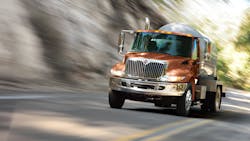When it comes to advancing vehicle and equipment reliability, there must be an improvement or change in the way people think and work toward common goals. These goals include investing in new vehicles, equipment and technology; more maintenance; improving existing systems and processes; better vehicle and equipment operation, etc.
Regardless of the path taken, there needs to be a change in the way people think and work. In other words, a reliability-improvement culture needs to be created.
A fundamental requirement for this is the establishment of “island of excellence.” This is where:
- Breakthroughs in thinking and working occur.
- Focused improvements in equipment performance and reliability take place.
- Real shop-floor culture change emerges.
- Team members become the advocates of a reliability-improvement culture.
Preconditions
For all this to happen, certain things must take place.
1. Prepare and communicate a persuasive business case for change.
Top management must clearly articulate a compelling business case for improving equipment reliability. There should be specific reasons for change. For example:
- Impact of current vehicle and equipment performance and reliability on the operation.
- Changes in vehicles, equipment and technology.
- Different management expectations.
- Increased competition.
- Business growth opportunities.
- Changes in regulatory requirements.
2. Concentrate on breakthrough opportunities.
Review shop and vehicle equipment performance for apparent improvement opportunities and where any changes would result in immediate improvements.
Look for issues such as high amounts of unplanned downtime, sporadic unplanned downtime, increasing or excessive amounts of waste and/or rework and increasing or excessive road service calls.
Collect and review maintenance data, searching for information that can be used to drive maintenance operations and improve efficiency.
Think small for big changes. Focus on a specific area of the shop, a particular model of vehicle, etc. Rapid and sustainable change is made excruciatingly more difficult – and risky – by attempting to make organization-wide changes.
Identify a breakthrough opportunity where results can be observed within two weeks to two months.
3. Gather a multi-functional breakthrough team.
This team should include top managers, middle managers, shift managers, technicians, vehicle operators, etc. People at all levels who directly and indirectly influence maintenance reliability need to be fully engaged in the improvement process in order for a meaningful dialogue on reliability improvement.
Encourage out-of-the-box and innovative thinking.
The multi-functional breakthrough team also needs to be made aware of, and truly understand, the reasons for change.
4. Look for causes of problems.
As part of its duties, the breakthrough team should look for hidden problems and investigate ways to eliminate the causes – or sources – of those problems using root cause analysis tools. The intent here is to go beyond the quick fix and identify the underlying causes/sources of a problem so that the most effective solution can be determined and implemented.
In addition, the team should evaluate inspection and maintenance procedures to determine how they address any problems that have been uncovered. Do existing procedures need to be modified or should new ones be developed?
If so, a best practice is to come up with detailed step-by-step instructions – complete with photographs and illustrations – as needed, along with brief checklists to serve as reminders of the procedural steps. Use these as training documents.
5. Sustain and leverage the improvements.
All of the improvements, successes, failures and actual methods used should be documented, communicated and leveraged for additional reliability improvements for vehicles, equipment and for the shop. This is where the island of excellence becomes a showplace and the breakthrough team becomes the promoter of reliability.
Conclusion
In reality, reliability is more about people than technologies. Creating a reliability-improvement culture, in most cases, is about changing the way people think and work, and that includes their changing their behaviors and habits.
Doing so enables them to practice and support reliability improvement.
The key is to engage the right people, on the right equipment, using the right tools. In the process, they’ll begin developing their own common-sense reliability culture.
Robert Williamson, CMRP, CPMM, MIAM, is the owner of Strategic Work Systems (www.swspitcrew.com), a company specializing in products and training for visual systems for improving equipment effectiveness. He a member of the Institute of Asset Management – the professional body for those involved in acquisition, operation and care of physical assets.
